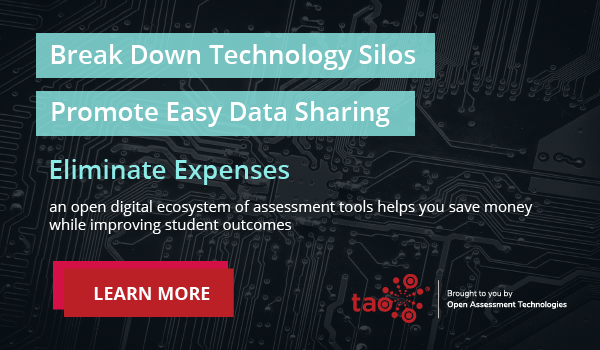With many school districts taking on remote or hybrid learning models in the fall, administrators, educators and parents continue to have questions: How can we effectively bring real-world skills to students online? Can distance education keep students engaged? What happens if eLearning becomes a national requirement?
Luckily, there are many EdTech platforms and tools that provide students with meaningful learning experiences whether they’re in the classroom or in their home. However, before investing into the latest remote learning technology, education leaders must consider the critical factors that will make or break the transition — no matter what instruction looks like in the fall and in the long term.
The North Star is Here: Interoperability is a Must
As the status of the pandemic, and with it the needs of students, fluctuates, schools must be able to easily add the right tools to mitigate gaps in learning during the transition. However, not all tech can be swapped in and out without a major IT headache — or worse, having to re-negotiate with vendors as the school’s needs change.
To implement a flexible distance learning system, education leaders must build an EdTech system based on interoperability. An interoperable foundation ensures that all tools and platforms in the tech stack are designed to simply plug and play into the school’s system. As the world changes, so can the tech, without losing data or compromising security.
To learn more about the basics of interoperability, read our series here.
To summarize the series: without interoperability, schools are wasting time and costs in IT overhead and end user hand-holding. To make matters worse, a traditional tech stack forces teachers to add to their at-capacity workloads, as they repeatedly enter login credentials, search for information and post student data in multiple platforms. When schools invest in an interoperable ecosystem, those problems simply disappear.
The True Costs of an Interoperable EdTech Ecosystem
Interoperability is a must. But how much is it costing schools and districts? The answer contains three parts: the initial investment, time spent on strategy and the long-term ROI.
The Initial Investment
Interoperability is the optimal approach to increasing IT efficiency and minimizing costs. Luckily, when it comes to building that system, most schools aren’t starting from scratch. Even before the pandemic, many districts have already implemented measures toward a digital learning strategy. Building on that foundation — and ensuring seamless integration of add-on products in the future – creates a path to a successful digital transformation that makes the initial investment insignificant compared to the long-term savings.
Time Spent On Strategy
The second cost of revamping the school tech system? Strategy. According to Rob Abel, Ed.D. of IMS Global,
“[An interoperable ecosystem] requires a well-thought-out strategy with respect to the instructional goals, the approach to evolution, etc. And those strategies require leadership that cuts across IT, curriculum, and instruction.”
In other words, when considering interoperability, education leaders must look at not only the available technology but how it ties to the curriculum and instruction. Luckily, aligning all three, while prioritizing accessibility, security and ease-of-use, is an inherent part of the interoperable approach. By leaning on standards such as IMS Global frameworks for interoperability, education leaders can follow a vetted roadmap to successful implementation.
The Long-Term ROI
The benefits of an interoperable ecosystem are endless. The system pays for itself over and over as it streamlines administrative and IT duties, while empowering teachers with more control of their remote classrooms. On a district level, the framework enables consistent instruction from technical, instructional, and professional perspectives, which supports greater instructional equity, access and efficient operations.
At the end of the day, interoperability supports a critical goal, which is the same for both remote and in-classroom learning: it creates meaningful, personalized learning experiences that students carry for the rest of their academic, professional and personal learning journeys.
—
The major cost of interoperability is not the technology itself but the leadership’s investment in time and strategy. That alone can become a burden on overwhelmed school staff. However, with a partner committed to interoperability and a successful transition to distance learning, school leaders can mitigate concerns around time investment and strategy challenges, while reaping the benefits of a modern, flexible system.
A partner like TAO Testing has been in the game of digital transformation in education long before the pandemic — and has the expertise, technology and partnerships in place to ensure a seamless transition into distance learning or any hybrid learning model.
Contact us to establish a long-term, sustainable EdTech strategy for your school or district.


